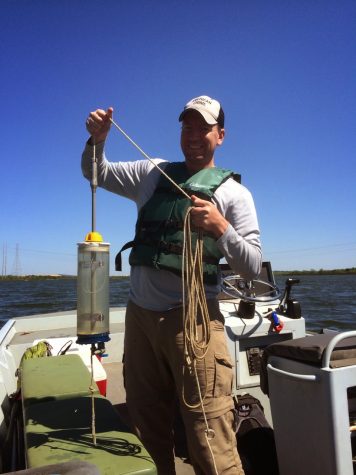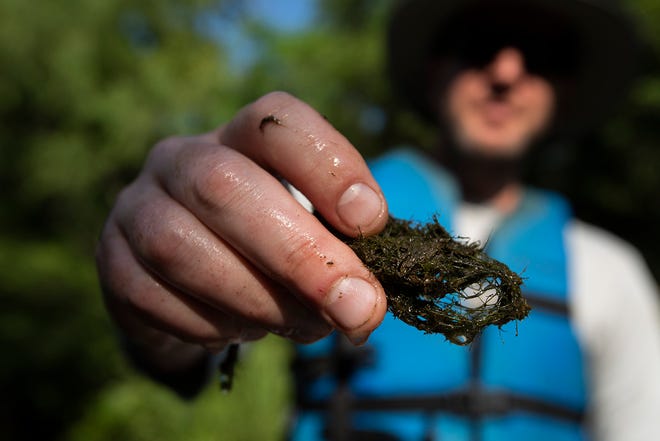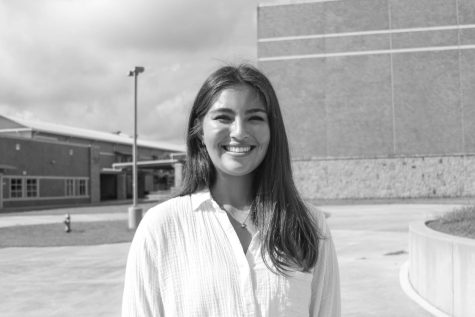Who’s toxic?
the effects of Travis County growth
Dr. Brent Bellinger on Lady Bird Lake collects samples for genetic sequencing. Algae is a neurotoxin not present in the waters’ composition.
September 2, 2022
The summer of 2019 was just as hot as any other boiling Austin summer, but this time not only heat threatened a good time. A new toxic algae killed a handful of dogs that had been swimming in Lady Bird Lake. These harmful blooms are back in the water this summer and have even been seen in Lake Austin and Lake Travis. The blue-green algae killed a dog who had swam in the Hudson Bend area of lake Travis in 2021.
“They’re consuming the algae,” Dr. Brent Bellinger of Austin Watershed Department said. “Most of these dogs have been long-haired, so the algae gets stuck in there until they groom themselves.”
Luckily, this algae is a neurotoxin, meaning it’s not present in the water’s composition and it can’t be consumed through household water filters. The growth started with numerous factors all contributing to the much larger picture: pollution.
“It’s kind of like that Goldilocks moment where everything has to be just right,” Bellinger said. “These things happen incrementally through time.”
As Austin continues to develop, the levels of pesticides and bacterial runoff increase. Bacteria, harmful and non, are all created from the unlikely mixtures of these chemicals. More lawns and golf courses being built is leading to harmful fertilizers running into the filtration system.
“That’s a lot of material to process,” Bellinger said. “It’s just a lot of extra nutrients that help the growth of bacteria; especially as the water gets warmer.”
Dr. Bellinger works with the University of Texas at three sites on Lake Austin and Lady Bird Lake to collect algae and any other growth found in the water to find out more about how this growth could change in the future.
“We put that into a bottle and then we’ll grab a water sample from it,” Bellinger said. “They’re helping us do genetic sequencing of all the species that are present in the algae, and we’re looking at how these are changing.”

The Austin Watershed Department is focused on this research to see how the ecosystem is changing. They take their results and use it to advise engineers and businesses on how to promote ‘smart growth’ when building or creating new projects in the greater Austin area.
“You have to try to minimize urban sprawl,” Bellinger Said. “but everyone wants to have their own house and a big yard.”
New Austinites go out to the hill country to find just that. The natural landscape of the hill country is being changed by single family homes, yards and community centers. It causes rainfall not to be absorbed into much needed groundwater.
“And that’s really hard on an ecosystem.” Bellinger said. “You can try to have permeous pavement so the water actually infiltrates and doesn’t run off the concrete.”
There are many things newly developed neighborhoods around the Austin area can do to help ‘smart growth’. Families can install cistern rain tanks, so that any rain that falls on roofs can be collected and used for irrigation or watering. They can have rain gardens, so that this is an area that’s capturing the water that’s on the property. If families live near a creek or a river, don’t mow all the way to the edge of the yard, maintain a buffer strip of bushes and trees and other plants that absorb this runoff water.
“That helps stabilize the sediments so you’re not getting erosion in your yard,” Bellinger said. “And it’s helping capture nutrients that might be in your yard or moving to these natural water sources.”
Although one small change won’t solve the problem, it will help minimize the changes made to each ecosystem affected by the rapid growth of Travis County.
“This is death by 1000 cuts,” Bellinger said. “These subdivisions that disregard the effect of this growth add up over the years, and it degrades an ecosystem.”
Appreciation for the Austin landscape only runs so deep. As more and more people favor horizontal urban sprawl [single homes], many natives are losing sight of what will maintain their healthy city.
“It’s affecting things you can see every day,” Bellinger said. “Just getting out there and getting exposure to it really illuminates how interconnected everything really is.”







